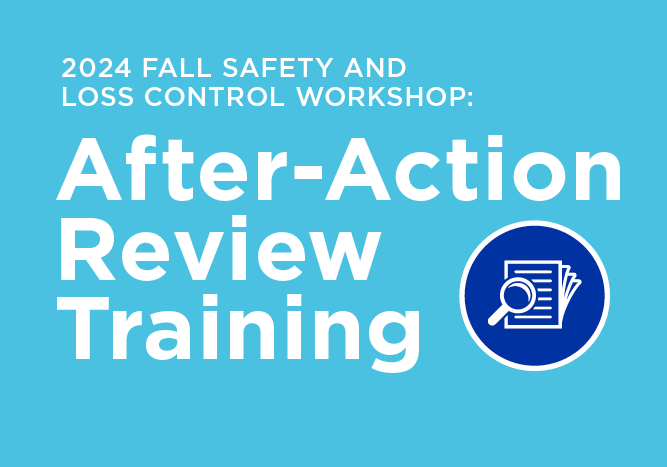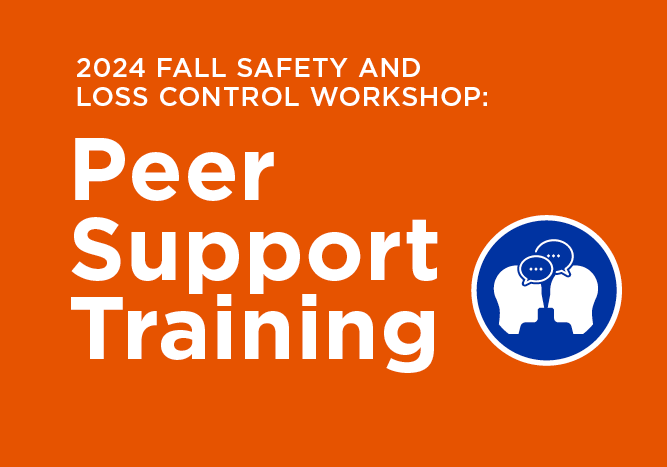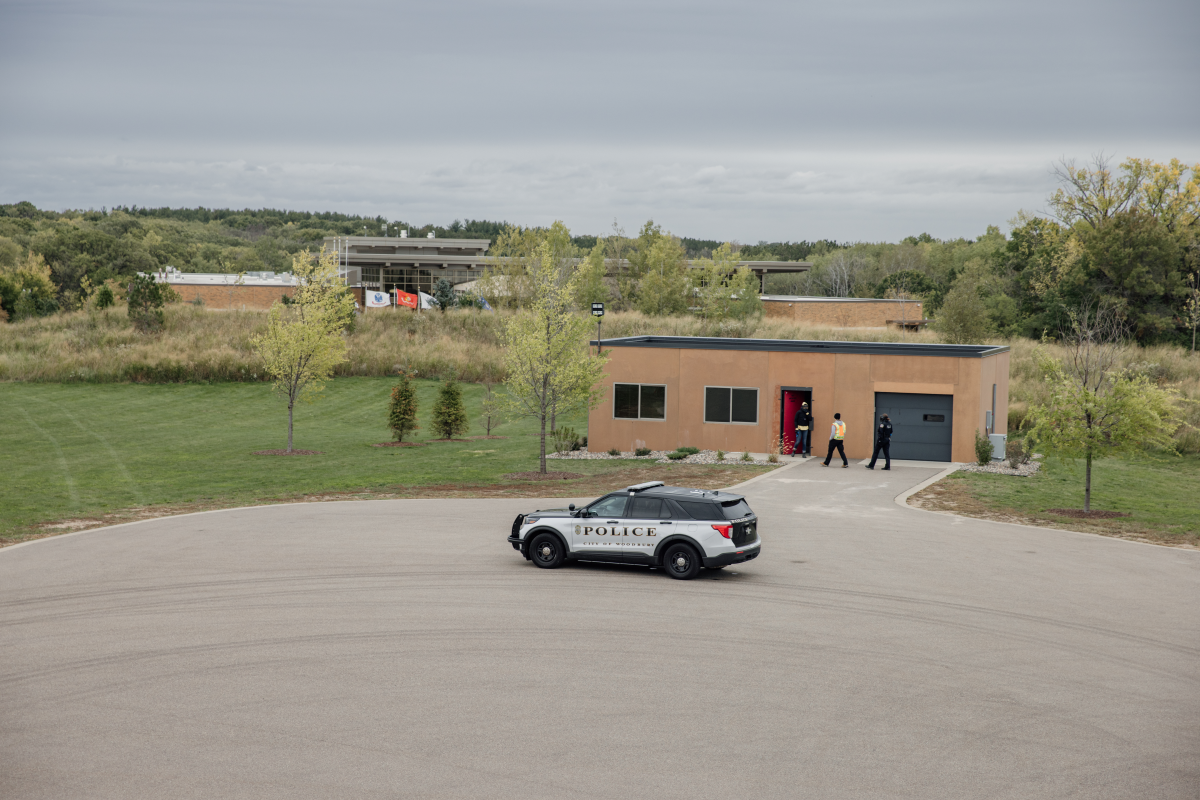Introduction
The Peer Support Advisory Board has drafted guidelines establishing a statewide standard of peer support and training that uses best practices, research, and experience from established emergency service profession programs throughout the state of Minnesota.
These guidelines and standards are intended to provide best practices and recommendations for forming and maintaining a peer support structure for sworn and civilian personnel in emergency service programs. The guidelines are not intended to be a rigid protocol, but reflect the commonly accepted and recognized practices of Minnesota organizations they serve.
Return to Peer Support Standards and Training page
Return to the PTSD and Mental Health Toolkit home page
Guidelines for practice of peer support
1.1 Purpose
The purpose of a peer support team (PST) is to promote resiliency and recovery by providing supportive interactions from skilled team members to take on the day-to-day demands of the job and following critical incidents.
“Peer support” is emotional and practical support between two people who often share a common experience.
A “peer support member” is a specially trained individual that provides emotional, social, and practical support to their peers when needed.
A “peer counselor” has often lived through that similar experience and is trained to support others.
What peer support provides:
- A shared experience.
- Trusted communication.
- Support and encouragement.
- Basic psychological first aid.
- Increased understanding of critical incidents and traumatic events.
- Resources and a referral to a higher level of support.
1.2 Basic requirements
Effective and successful peer support is peer-driven, while benefiting from the support of command and administrative staff, with advice, insight and guidance from mental health professionals.
1.3 Principles
The following are the principles and qualities required of peer support team (PST) members:
- Be a peer: A PST member should be viewed as a peer within the organization. They should publicly commit to serving as a peer team member while protecting their coworker’s privacy.
- Be trustworthy: A PST member should be committed to building and maintaining trust.
- Be responsive: A PST member should recognize when they are being called to act as a peer, respond earnestly and reflect on and assess their effectiveness.
- Be skilled and knowledgeable: A PST member should be trained and practiced in core skills and knowledge. This includes knowing the limits of their role, being knowledgeable about organization and regional resources, and referring as appropriate to a higher level of support, intervention, or care.
- Be healthy: A PST member should possess, prioritize, and attend to their own health and wellbeing.
1.4 Definitions
- Peer support program (PSP): A peer support program is a worker-centric resource that can augment, but not replace, existing programs such as Employee Assistance Programs (EAPs), and/or internal or external professional psychological services.
- Peer support team (PST): The peer support team (PST) is made up of specially trained and recognized peer support counselors (see below) and functions as a formal peer-lead support system and resource guide for their fellow first responders. The PST provides support to their co-workers and adjacent first responders who are experiencing personal and/or work-related stressors. It also provides support during and following critical or traumatic incidents.
- Peer support counselor (PSC): A peer support counselor is a specially trained coworker, not a professional counselor or therapist. Peer support counselors are trained to recognize the limits of their role and refer coworkers as appropriate to a higher level of support, intervention, or care.
There are three levels of non-disclosure of personal information the PSCs must understand and practice:
- Privacy: The expectation of an individual that disclosure of personal information is confined to or intended only for the PSC.
- Confidentiality: A professional or ethical duty for the PSC to refrain from disclosing information from or about a recipient of peer support services.
- Privilege: The legal protection from being compelled to disclose communications in certain protected relationships, such as between attorney and client, doctor and patient, or priest and confessor. Minnesota emergency service providers are protected under Minn. Stat. § 9731, 181.9732, 13.43 sub 9, and 13.02 sub 12.
1.5 Limits to privacy, confidentiality, and privilege
Peer support counselors should be aware that federal law may supersede state statute for privacy, confidentiality, and privilege.
- Organizations should develop clear policies for peer support programs (PSP), including establishing confidentiality guidelines and reporting requirements for PSCs that are consistent with state and federal laws, as well as organization policy. PSCs should advise peers that they are mandated reporters. The policy may provide a procedure for PSCs to report the following exceptions to confidentiality:
- The PSC reasonably believes the disclosure is necessary to prevent harm to self by the person in receipt of public safety peer counseling or to prevent the person from harming another person, provided the disclosure is only for the purpose of preventing the person from harming self or others and limited to information necessary to prevent such harm;
- The person receiving public safety peer counseling discloses information that is required to be reported under the mandated reporting laws, including, but not limited to the reporting of maltreatment of minors under section Minn. Stat. 260E.06 and the reporting of maltreatment of vulnerable adults under section Minn. Stat. § 626.557, provided the disclosure is only for the purpose of reporting maltreatment and limited to information necessary to make such a report;
- The person who received public safety peer counseling provides written consent authorizing disclosure of the information;
- The emergency service provider who received public safety peer counseling is deceased and the surviving spouse or administrator of the estate of the deceased emergency service provider gives written consent authorizing disclosure of the information; or
- The emergency service provider who received public safety peer counseling voluntarily testifies; in which case the PSC may be compelled to testify on the same subject.
- It is the responsibility of each organization’s PST members to educate supervisors and staff on the confidentiality guidelines followed by the PST and set forth in policy. PST members should not be mandated to provide information or be asked to provide information to supervisors or fellow peer support members obtained through peer support contact according to policy.
- PST members should not keep formal written records of contacts with peers. Anonymous statistical information, such as number of peer-to-peer contacts, may be recorded to support program deliverables, budget justification, and program review.
- PSCs must have an understanding of the overlapping principles and limits of privilege, confidentiality and privacy, due to the sensitive information shared during peer-to-peer contacts. A peer counselor should be able to articulate these principles when asked and sign a confidentiality agreement, indicating their understanding of these principles and consequences for violation of these principles.
- After a large-scale event, PSCs may provide a general briefing regarding their engagements during the immediate aftermath of the incident. These insights should be included in the incident debrief or “After Action” report developed by the organization. PSC should be mindful to only share general information so as not to violate the principles of confidentiality and trust. This report may be produced in conjunction with the chaplains and mental health professionals involved in the event.
1.6 Selection, onboarding, deselection
A PST member position must be a voluntary, not mandated position. When nominating a PST member, some considerations should be:
- Nomination: The application and interview process should involve existing PST members. The program clinical director or contracted therapist may be included in the interview process. PSCs shall be in good standing with their organizations and should have received recommendations from their superiors and/or peers. Considerations for selection of PSC candidates include, but are not limited to, previous education and training; resolved traumatic experiences; and desirable personal qualities such as maturity, judgment, personal and professional ethics, and credibility.
- Interview: Questions for applicants should be standardized; an essay format may be used in place of an interview. The interview panel may consist of peer support members and the licensed mental health professional associated with the PST.
- Pledge: A pledge or confidentiality agreement may be asked of PST members
- Integration into the team: Statutory mandatory training, boundaries, and expectations need to be set prior to integration.
- Deselection: It is beneficial that a procedure be in place that establishes criteria for deselection from the program. Possible criteria include breach of confidentiality, failure to attend training, or loss of one’s good standing with the organization.
- Personal leave: PSCs may be provided with the option to take a leave of absence and encouraged to exercise this option when personal issues or obligations require it.
1.7 Skills
A peer support team member must possess the following skills:
- Basic understanding of critical incidents and traumatic events.
- Basic understanding of the psychological challenges of the job.
- Basic understanding of psychological first aid.
- Ability to triage further resources if needed.
- Knowledge of resources and most effective route to access them.
- Understand limits to their privilege, how and when they can provide peer support within the limits of their organization’s policies and state statues.
A peer support team must be well-versed in the following tools:
- One-to-One: A One-to-One is led by a peer support counselor to address the stressors of his or her co-worker. It is a one-to-one interaction that is in a private space. This interaction may lead to referral or follow-up.
- Defusing: Defusing is a small gathering of the first responders (i.e. crew, staff, etc.) who just experienced a critical incident or traumatic event, typically occurring within 8-12 hours of the event. The group is gathered in a private setting and is led through a protocol by a peer support counselor. A mental health professional that is a contracted support for the PST may also be present. Elements of a defusing activity*** are:
- Introduction (What happened)
- Exploration (How is everyone doing)
- Information (Education on self-care)
- Debriefing: A debriefing is a gathering of first responders who just experienced a critical incident or traumatic event and often includes multiple organizations. Debriefing typical occurs 24-72 hours after a critical incident but can happen much later. Debriefings are led by a PST or a critical incident stress management (CISM) team. Elements of a debriefing are:
- Pre-meeting (team members)
- Intro and guidelines
- Facts/description of event (often helpful to have participant go in chronological order and describe their role)
- Thoughts/impressions
- Reactions/feelings (What was the worst part)
- Signals of distress (What are you experiencing)
- Information and recovery/teaching
- Wrapping up/summary
- Crisis Management Briefing (CMB) is conducted for 3-100+ people at one session, in a private group setting to provide basic information regarding the critical incident, discuss and normalize reactions, thoughts, or feelings related to the incident. The goal is to provide education on stress signs, symptoms, and stress-related coping skills. Resources for follow-up should be available and effectively communicated. Elements of a crisis management briefing are:
- Pre-meeting
- Intro and guidelines
- Fact phase
- Thoughts phase
- Emotions phase
- Education phase
- Question and answer phase
- Resources
1.8 Models
There is no universally accepted model for every organization. PSTs should be invested in ongoing education to study and identify the efficacy of their model and recognize other organization models.
- Size: PST size may vary depending on variables such as organization size, divisions, budget, resources, geographical area, promotions, transfers, and retirements. A ratio of one PSC per seven staff members is considered an acceptable standard but may vary depending on resources available.
- Team composition: Care should be taken to include members from both the sworn and civilian staff. Members should represent a diverse cross-section of the organization. When an organization’s size and resources allow, organization PSCs should cover all divisions, including civilian, sworn, and volunteer. PSCs should be distributed over different shifts, regional areas, precincts, and districts.
- Resources and support: PSTs are encouraged to combine and share program resources, especially training and mutual support with other teams. Building inter-organizational relationships is beneficial when resources may be strained or during a critical personnel issue. PSCs may also be able to provide mutual support to other PSCs. Departments should consider providing peer support for members at the supervisory and command staff level by training members of the appropriate rank to provide those opportunities to their peers.
1.9 Roles
A peer support team should consider including the following roles:
- Clinical director: In order for the organization to meet the emerging standards of care in peer support programs, it is preferred the department have a clinical advisor for professional psychological consultation with a first responder culturally competent licensed mental health professional. The role and scope of the clinical director should be mutually determined by the organization and the mental health professional. This person must avoid any dual relationships and shall not conduct fitness for duty evaluations. Clinical directors should not be a PSC, but should be used as a resource to the PST.
- Licensed mental health professional provider (LMHP): Trained counselor or therapist who can maintain the highest level of confidentiality and is competent in first responder and organization cultures. This person must avoid any dual relationships and shall not conduct fitness for duty evaluations. The licensed mental health professional’s intent is not to make a diagnosis or provide treatment to staff, however, the staff member and LMHP may enter into a private agreement for counseling or therapy. Licensed mental health professionals should not be a PSC, but should be used as a resource to the PST.
- Peer support team coordinator: The leader and internal champion of the PST that coordinates with the clinical director and oversees training and oversight of peers and the peer support program. Duties may include long-term team planning, program logistics, and development. This leader coordinates peer support activation, makes referrals to mental health professionals, collects utilization data, and coordinates training.
- Peer support counselor: Often referred to as “peer support team members,” these staff ideally are representative of the makeup of the organization and can include all levels of rank, non-sworn individuals, and retired staff. They must go through the selection process and certified training. To ensure privacy, confidentiality, and privilege, organizations that have an internal employee assistance program (EAP) run by organization staff shall ensure these staff hold the dual role of peer support counselors.
1.10 Role Conflict
Because peer support teams are built on trust real or perceived role conflict can undermine a program. The following considerations will help eliminate some of these concerns:
- PSCs are in a unique position and should refrain from relationships that may harm or exploit the peer, such as religious, financial, or sexual engagements.
- PSCs should be mindful of role/rank differences between the PSC and emergency services provider. Whenever possible, PSCs should only provide peer counseling to emergency services providers who are of the same rank/role within their organization. This should not prohibit PSCs from defusing an emergent need with a ranking emergency services provider. PSCs should be encouraged to refer that member of the organization to another PSC of appropriate rank as soon as practical.
- Each organization should evaluate supervisor responsibilities and the viability of having supervisors as PSCs. Supervisors may have additional requirements regarding the reporting of issues such as sexual harassment, racial discrimination, and workplace injury that can place the supervisor or the organization in jeopardy if the procedures are not followed.
- PSCs should recognize role conflicts and conflicts of interest. PSCs should refer peers to another PST member or mental health professional if a conflict exists or is foreseen. PSCs should be cautious of a peer seeking several contacts in a short period of time and should offer a referral as needed.
- PSCs may not be part of a PST providing services to an emergency service provider if the critical incident stress management team member is a witness to the critical incident for which the person is receiving services, per Minn. Stat. § 181.9731 Subd. 2 and Minn. Stat. § 181.9732 Subd. A PSC may refer the person to another PSC or other appropriate mental health or community support service.
1.11 Peer support operations
- Operations recommendations:
Develop recommendations for your organization’s policies based on your organization’s PST model.
- Be Proactive: There should be a process to build and maintain communication and connection between the peer support clinical director, team coordinator, peers, officers, and staff. Open communication between roles needs to be communicated with all participants in peer support programs.
- Be Responsive: There should be a process in place to respond to a peer support request in a timely and efficient manner, keeping in mind the personal preferences of the individual making the request.
- Be Timely: The response to a peer support request should have an expectation of timeliness that needs to be operationalized and universally understood by PST members.
- Initiation of request for peer support
- Self-referral: There needs to be a referral mechanism in place for self-referral that has the least number of obstacles.
- Peer referral: There needs to be a referral mechanism in place for Peer-referral that maintains a high level of confidentiality but also does not allow referrals to be left unattended.
- A need for referral is not always from one incident of trauma at work. Sometimes it is a combination of many work incidents, or a combination of work and an individual’s personal circumstances and experiences.
- Supervisor-referral: There should be a referral mechanism to allow an organization supervisor to initiate a connection request on behalf of another member that would benefit from having support. This is to maintain a lateral model while also providing a mechanism for due diligence. Peer support is not to be utilized in lieu of discipline, as part of discipline, coaching or work improvement plan, as this creates role and trust issues, whether real or perceived.
- Peer support management system
- Communication around Individual’s information, especially mental health, must not be stored in the system. Information that cannot be protected should not be stored or used.
- Any software utilized must meet relevant security, encryption, user authentication, data-storage requirements and should be data practices compliant.
- A system should be established that allows the organization to manage proactive connections and provide proof of coverage through reporting and anonymous tracking that is based on the PST’s needs.
- Organization protocols and procedures must be accommodated, along with Union or Federation concerns.
- Anonymous and de-identified statistical information may be recorded regarding utilization of peer support programs. Information that could identify staff members, staff member’s number of interactions with the peer support program or information that could violate the trust of a program should not be collected. This statistical information may be used as a guide to amend peer support services and programs, change training focus or justify a program. Organization administrators and Peer Support Team Coordinators should recognize that results of peer-to-peer interactions are not always quantifiable.
Guidelines for peer support training
2.1 Training programs
Initial peer support training programs must comply with Minn. Stat. § 181.9731, in order to allow for an acceptable level of privileged communication within a PST.
2.2 Training requirements
Continuing education may be via an accredited trainer or vendor, may be focused around a support industry or specialty group, and may comply with Minnesota Peace Officers Standards and Training (POST) Board education standards.
Training should be at a minimum of 16 hours initially. Continuing education training is also suggested quarterly, at a minimum of four hours per quarter. Peer support training should focus on skill development, resource education, networking, and problem solving.
A PST must be trained in specific knowledge areas, including how each directly applies to peer support. Initial and annual training should cover, at minimum, the following topics:
- Confidentiality/ privacy/ privilege.
- Suicide.
- Chemical dependency.
- Post-traumatic stress disorder (PTSD).
- Concept of psychological first aid.
- Relationships.
- Basic wellness.
- Behavioral health.
2.3 Training model
Training programs should utilize the “Teach – Demonstrate /Practice – Process” model when applicable. Some education will not fit this model.
- Teaching a topic, skill or tool.
- Demonstrate or practice utilizing the topic, skill or tool as a PST.
- Processing as a team after the demonstration.
2.4 Initial training/ vendor selection
Initial Peer Support training providers should:
- Be accredited as defined in Minn. Stat. 181.9731.
- Be recognized by the commissioner of public safety.
- Have emergency service professional cultural competency training.
- Have a history of working with emergency service groups
- Meet MN POST Board standards with educational curriculum.
2.5 Continuing education
Continuing education training vendors should:
- Have emergency service cultural competency training.
- Have a history of working with emergency service groups.
- Strive to meet MN POST Board standards with educational curriculum.
- Be applicable to emergency service wellness and mental health with an emphasis on peer support.
2.6 Training topics/ sub-topics
The following are topic ideas that PSTs can use for continued education:
Be a Peer
When to seek licensed mental health consultation
Referral information
Organizational stress
Cultural competence, diversity, and bias awareness
Roles and responsibilities
Trustworthy
Culture and trust
Confidentiality, Privacy and Privilege
Role Conflict
Role and boundaries
Limits and Liabilities
Ethics
Responsive
Communication
Active listening skills
Problem Assessment
Critical incident stress management
Dependency and abuse (alcohol, substance, gambling, etc.)
Relationship and family issues
Local state and national resources
Organizational stress
Wellness and self-care
Skilled
Communication
Active Listening skills
Problem Assessment
Problem solving/ scenarios
Psychological Symptoms
Medical conditions vs psychiatric disorders
Stress management
Resiliency
Burnout
Grief Management
Domestic Violence
Medical issues with psychological or lifestyle impact
Crisis management intervention
Critical incident stress management
Dependency and abuse (alcohol, substance, gambling, etc.)
When to seek licensed mental health consultation
Referral information
Relationship and family issues
Local, state and national resources
Veteran and military support
Organizational stress
Wellness and self-care
Physical wellness
Financial wellness
Spiritual wellness
Social Health and relationships
Chaplaincy and peer support
Personal Wellness
Stress Management
Resiliency
Burnout
Compassion Fatigue
Critical incident stress management
Relationship and family issues
Organizational stress
Wellness and self care
Return to Peer Support Standards and Training page
Return to the PTSD and Mental Health Toolkit home page






